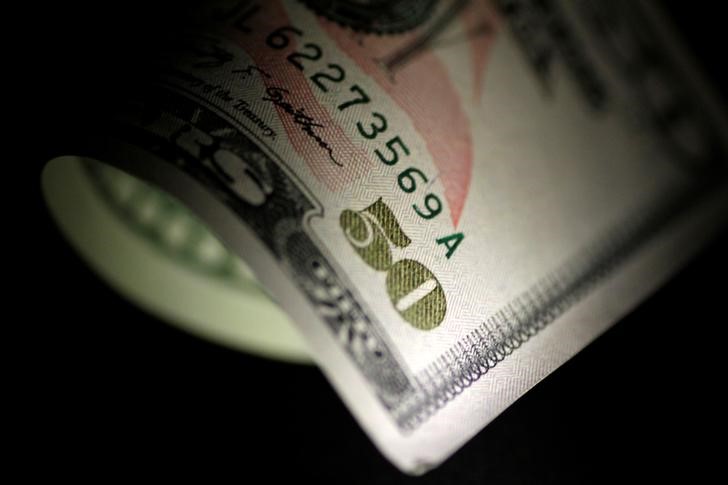© Reuters. FILE PHOTO: Banknotes of Japanese yen and U.S. dollar are seen in this illustration picture taken September 23, 2022. REUTERS/Florence Lo/Illustration
By Rae Wee
SINGAPORE (Reuters) – The dollar loomed over major peers on Thursday as Treasury yields peaked at multi-year highs, while the yen slid to a fresh 32-year low and kept markets on high alert for any signs of an intervention.
The surging greenback also pushed the Chinese to a record low in Asia, though it later trimmed intraday losses on a report of a potential reduction in COVID quarantine time for visitors.
The fragile yen hit a fresh trough of 149.98 per dollar, its lowest since August 1990, and last bought 149.975.
It has been on a losing streak for 11 straight sessions as of Wednesday’s close, and has renewed 32-year lows for six sessions now.
“Looks like it’s the rabbit caught in the headlights at the moment,” said Ray Attrill, head of FX strategy at National Australia Bank (OTC:).
“Given that Treasury yields have moved decisively above 4%, were it not for the threat of intervention then I think dollar/yen would already be trading north of 150.”
The benchmark rose to 4.154% on Thursday, its highest level since mid-2008, while the two-year Treasury yields touched a 15-year high of 4.582%. [US/]
Last month, Japan intervened in the foreign exchange market to buy yen for the first time since 1998, in an attempt to shore up the battered currency.
The offshore yuan was last 0.41% higher at 7.2401 per dollar, after having bottomed at 7.2794 earlier in the session, its weakest level since such data first became available in 2011.
China is considering a cut in the duration of quarantine for inbound visitors from 10 days to seven days, Bloomberg News reported on Thursday, citing people familiar with the matter.
“Every step in the direction of reducing the restrictions is going to be a good thing for the Chinese economy … but it’s probably too early (to say) until we get more clarity,” said Joseph Capurso, head of international and sustainable economics at Commonwealth Bank of Australia (OTC:).
Against a basket of currencies, the gave back some gains after a 0.9% overnight surge, and was last 0.13% lower at 112.83.
The euro gained 0.1% to $0.9782, licking its wounds following a nearly 1% overnight slide.
Sterling was marginally up 0.01% at $1.12245, little helped by September’s double-digit inflation print, firming bets for more aggressive rate hikes from the Bank of England.
But the pound was not out of the woods yet as political turmoil continues, with the latest quitting of Britain’s interior minister adding to the uncertainty.
“The fight for Truss to stay in office continues,” said Charu Chanana, market strategist at Saxo Markets, referring to Prime Minister Liz Truss.
Meanwhile, the slumped 0.34% to $0.5657, easing from a brief rally earlier this week. It had hit an almost two-week high of $0.5719 on Tuesday, following the release of a hot inflation data.
The fell 0.12% to $0.6263, with Thursday’s data showing hints that Australia’s very tight labour market might finally be loosening.
Still, this week’s scorching inflation prints from Britain, New Zealand and Canada show that central banks across the globe are far from taming decades-high inflation, even at the expense of stifling growth.
“Because central banks misjudged how high inflation would go, they’re really still catching up by increasing interest rates significantly, and that’s going to cause big problems for the world economy, particularly next year,” said CBA’s Capurso.
Overnight, Fed officials also continued their hawkish rhetoric, as Federal Reserve Bank of Minneapolis President Neel Kashkari said that U.S. job market demand remains strong and underlying inflation pressures probably have not peaked yet.
Image and article originally from www.investing.com. Read the original article here.

